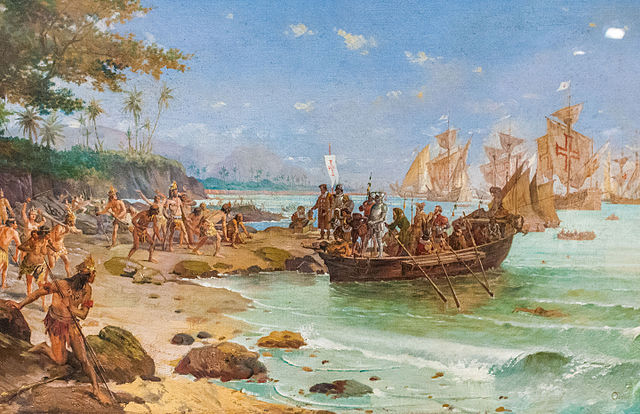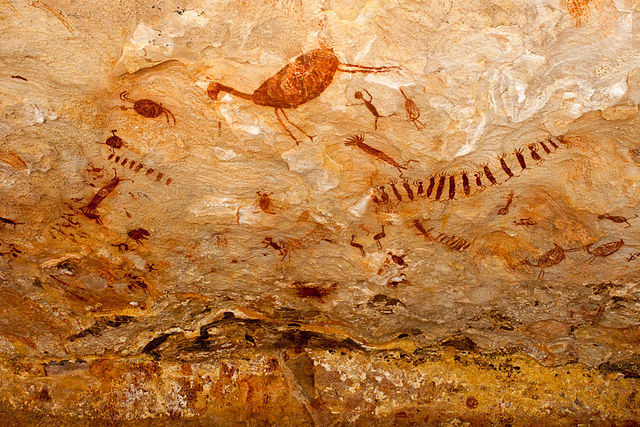The first arrival of European explorers to the territory of present-day Brazil is often understood as the sighting of the land later named Island of Vera Cruz, near Monte Pascoal, by the fleet commanded by Portuguese navigator Pedro Álvares Cabral, on 22 April 1500. Cabral's voyage is part of the so-called Portuguese discoveries.
The Landing of Cabral in Porto Seguro; oil on canvas by Oscar Pereira da Silva, 1904. Collection of the National Historical Museum of Brazil
Many scholars assert that the real discoverer of Brazil was the Spanish navigator Vicente Yáñez Pinzón, who landed at the Cape of Santo Agostinho [pt] on 26 January 1500
Cape of Santo Agostinho [pt], the site of Brazil's discovery by Vicente Yáñez Pinzón
Pedro Álvares Cabral landed in Porto Seguro on the southern coast of Bahia on 22 April 1500, claiming the region as a colony of the Portugal
Brazil, officially the Federative Republic of Brazil, is the largest and easternmost country in South America and in Latin America. Brazil is the world's fifth-largest country by area and the seventh most populous. Its capital is Brasília, and its most populous city is São Paulo. The federation is composed of the union of the 26 states and the Federal District. It is the only country in the Americas to have Portuguese as an official language. Brazil is one of the most multicultural and ethnically diverse nations, due to over a century of mass immigration from around the world.
Rock art at Serra da Capivara National Park, one of the largest and oldest concentrations of prehistoric sites in the Americas
Pedro Álvares Cabral landing in Porto Seguro in 1500, ushering in more than 300 years of Portuguese rule
Tiradentes, who led the separatist movement Inconfidência Mineira, was sentenced to death in 1792.
Execution of the Punishment of the Whip by Jean-Baptiste Debret. Nearly 5 million enslaved Africans were imported to Brazil during the Atlantic slave trade, more than any country.


![Many scholars assert that the real discoverer of Brazil was the Spanish navigator Vicente Yáñez Pinzón, who landed at the Cape of Santo Agostinho [pt]](https://upload.wikimedia.org/wikipedia/commons/thumb/c/c6/Vicente_Y%C3%A1%C3%B1ez_Pinz%C3%B3n._Museo_Naval_de_Madrid.jpg/457px-Vicente_Y%C3%A1%C3%B1ez_Pinz%C3%B3n._Museo_Naval_de_Madrid.jpg)
![Cape of Santo Agostinho [pt], the site of Brazil's discovery by Vicente Yáñez Pinzón](https://upload.wikimedia.org/wikipedia/commons/thumb/6/6b/Praia_de_Calhetas_-_Cabo_de_Santo_Agostinho_-_Pernambuco_%281%29.jpg/640px-Praia_de_Calhetas_-_Cabo_de_Santo_Agostinho_-_Pernambuco_%281%29.jpg)



